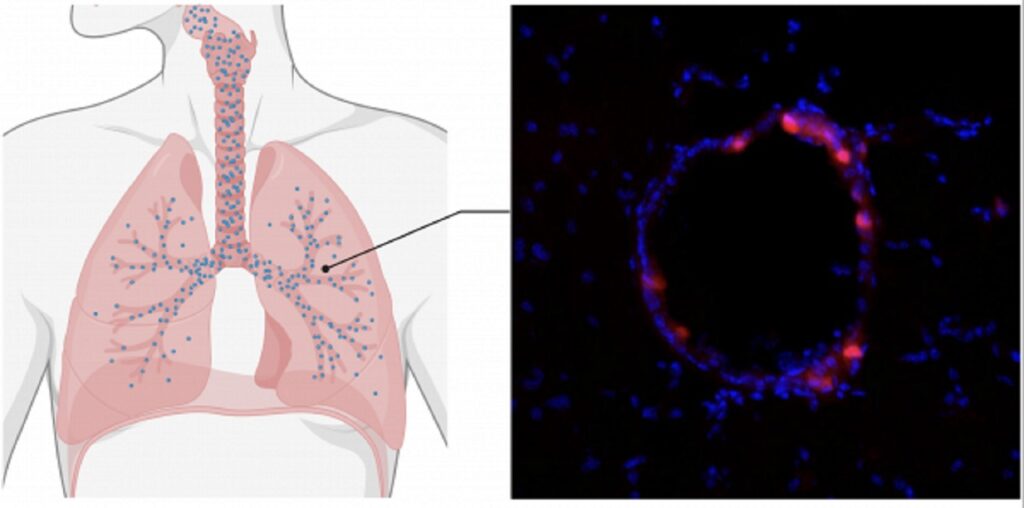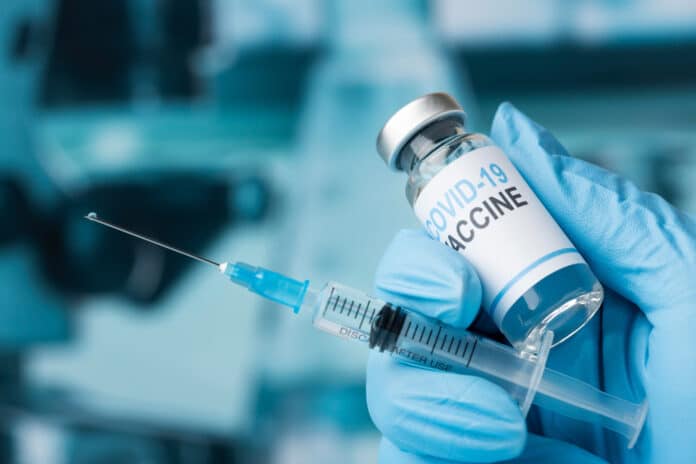Many issues may arise from lung-targeted mRNA therapies regarding transfection efficiency and inflammation caused by the nanoparticles that deliver the mRNA. A polymer containing poly(amine-co-ester) polyplexes, also known as PACE, is highly effective in beating this hurdle. Prof. Mark Saltzman’s group partially overcame this obstacle by using a poly(amine-co-ester) polyplexes nanoparticle.
Researchers have developed an inhalable vaccine that effectively protects against the COVID virus and opens the door to other messenger RNA (mRNA) therapeutics for delivering gene replacement therapy and other therapies.

It indicates that inhalable delivery systems have the potential to be used for the delivery of mRNA into the lung in a minimally invasive and lung-targeted manner, which could be used for a variety of pulmonary diseases in addition to COVID.
These medicines have had low transfection efficiency, which means that only a small fraction of the nucleic acids supplied make it into cells and cause the encoded protein to be expressed. Furthermore, in the past, the nanoparticles that deliver the mRNA caused inflammation and other issues.
The researcher has previously worked with the lab of Akiko Iwasaki, Sterling Professor of Immunology, to develop a delivery system for the COVID vaccine known as the “prime and spike.” Millions have already received the mRNA vaccine injected into their muscles in the system’s prime part. After receiving these vaccinations, the usual spike proteins or spike mRNA derived from the Coronavirus were sprayed directly into the nose to follow up with the vaccines.
In the new study, the researchers showed that the shot is unnecessary to protect against the disease. They just needed to provide two dosages, a prime, and a boost, sublingually, and they received a very strong immunological response. The study also showed that delivering different kinds of mRNA is generally possible. Hence, it’s not just suitable for vaccines. However, it’s also potentially good for gene replacement therapy and gene editing in diseases like cystic fibrosis.
Hee Won Suh, an associate research scientist in the Saltzman lab and co-corresponding author of the paper, said, “There are many chemistries that govern the transfection efficiency of mRNA, and we chose the top candidates and then tested them for our work.”
The development of nanoparticles for lung-targeted therapies has been difficult due to the type of material used for the nanoparticles. The researchers’ PACE polymer appears milder and better tolerated in the lung than lipid nanoparticles.
Alexandra Suberi, a Ph.D. student in the Saltzman lab and lead author of the paper, said, “We have guiding design principles, but it was not perfectly understood which formulation would be best. We screened formulations with varying amine structures and polyethylene glycol content to find a formulation that would work well in lung cells. The end-group and PEG content had a large effect on protein expression.”
Journal Reference:
- Alexandra Suberi, Molly K. Grun, et al. Polymer nanoparticles deliver mRNA to the lung for mucosal vaccination. Science Translational Medicine. DOI: 10.1126/scitranslmed.abq0603
